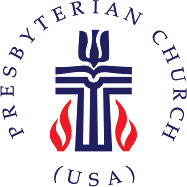
What is the relationship between science and religion? Thinking about this relationship and the various options can help you clarify your own thinking and help you properly understand the various discussions, debates and diatribes you may encounter. Understanding the other person's view on the relationship between science and religion can help you avoid a lot of talking past each other's conversations. I find it saves much frustration and for better or worse, shortens many conversations.
There are several kinds of relationships possible between science and religion.
Conflict: Either science or religion must emerge the winner. Religion has nothing to say to science. Or science must be completely subordinate to religion. This, of course, is the position of both science and religion fundamentalists.
Independence: Science and religion each have their own realm and don't have any reason to interact. "Religion tells us how to go to heaven, science tells us how the heavens go." This is where Stephen Jay Gould's Non overlapping magisteria idea might best fit. Science and religion each have their place but there is no "overlap" between the two disciplines.
Dialogue/Consonance: Science and religion each have their own realm and sometimes influence and interact with each other. Where there is overlap, each discipline's position must fit with what the other says.
Integration/Assimilation: This relationship encourages harmony between science and religion. Ultimately science and religion aid each other in our understanding of all that is.
Most people have a sense that both science and religion are concerned with "truth". But sometimes we work with a narrow sense of what truth is. We simplify truth and try to make truth reducible to a one or two sentence summary. The "truth" is more complex. One or two sentences will not sufficiently embrace the complexity of our world and certainly doesn't encompass the "truth".
John Polkinghorne often uses the helpful example of a teapot to encourage us to recognize that our views need some complexity. If one sees a teapot boiling there is both a how and a why answer to explain what is going on. The kettle is boiling because the stove is turned on. The kettle is boiling because someone is making tea. Both these statements are true. We have a more full understanding of what is happening when we accept both statements as true. Each statement captures different aspects of the same event.
Likewise, there must be some logical relationship between statements.
" The statements 'I have put the kettle in the refrigerator'
and 'I intend to make a cup of tea' just don't fit together. Because of
this need to make mutual sense, science and religion will have things to say to
each other."(Polkinghorne, Quarks, Chaos, and Christianity, Questions to Science and Religion, New York: Crossroads,15.)
Sometimes, both science and religion seek to answer questions that have "simple" answers.
How does water boil?
What is the chief end of man?
Why is the sky blue?
What is your only comfort in life and in death?
Sometimes it can appear that science and religion are actually non overlapping magisteria. But on deeper reflection the "simple" answers become increasingly complex. Answering the question, "Why does water boil?" can be as simple as explaining that someone turned the stove on or it can become a discussion of how a stove works, how electricity (or gas) works, or a discussion of thermodynamics.
Sometimes science and religion struggle with more complex questions that are of interest to both disciplines.
Why is there something, rather than nothing?
Is this (the world, the universe) all there is?
Why do living things die?
What does it mean to be alive?
Each question can, like Polkinghorne's tea kettle, be answered by both science and religion. The answer of one discipline doesn't negate the answer of the other. I would suggest that we need the input of both.
I'd like to know, what do you think is the relationship between science and religion?
**********
The four possible relationships of science and religion are from John Polkinghorne's book, Science and Theology. Polkinghorne's discussion is aid by Ian Barbour's insights.
Stephen Jay Gould's proposal for non overlapping magisteria is found is his book, Rocks of Ages. An essay of Gould's on NOMA may be found here.
The answers to the "simple" questions are:
Boiling water, here
What is the chief end of Man? here
Why is the sky blue? here
What is your only comfort in life and in death? here
To read more about John Polkinghorne, see here.
To read more about Stephen Jay Gould, see here.








No comments:
Post a Comment